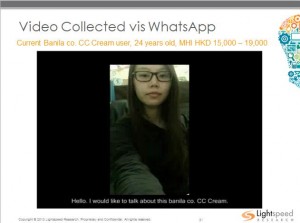“We’re in a crisis situation, there’s not enough talent coming through the pipeline, and organizations will experience difficulties…the truth is, data is a very creative science; being in IT does not make you better at data. Some knowledge of marketing is very important to understand customer data but a lot of marketers are not very numerate - it’s a big challenge for the future,” commented by Edwina Dunn, CEO of Starcount and founder and former CEO of Dunnhumby, in a recent interview with the Market Research Society.
I totally agree with Edwina’s statements and believe it is an issue faced worldwide in our industry. Recently, I was fortunate enough to be invited by the Hong Kong Polytechnic University, to act as a ‘Professor for a Day’, representing Lightspeed GMI to a group of approximately 150 final year students studying a course named ‘Analyzing & Interpreting Research.’
The session started early (8am is before the comfort zone for many students!) with a cartoon clip I found on YouTube few years ago, showcasing a funny conversation between a research buyer and a representative from the market research agency. The conversation within the clip was exaggerated, but frankly, with my 10 years experiences in Market Research, it is not something unheard of. Aside from sparking interest from the young audiences, the point I wanted to make to these future market research professionals was to understand that marketers need to think more like researchers and, vice versa, researchers need to think more like marketers.
The importance of being ‘digital’ in today’s world of data collection and how things have evolved overtime was a key objective. We talked about the basic concept of online research, as well as some of our newer offers, such as Lightspeed GMI Mobile, Lightspeed GMI Communities, and Lightspeed GMI Ad Tracker to outline but a few practical examples of how data driven marketing in our increasingly online world can be executed and propel marketing activity well beyond the traditional.
I demonstrated an example using WhatsApp (a popular mobile messaging app) to gather video feedback from respondents, which really ‘wowed’ this group. There was amazement at the sheer level of detail the respondent is willing to share, compared to the response one would expect from a traditional open ended question. What was key to convey was that when we say “digital data collection”, it does not necessarily mean high tech. It can be a simple matter of using readily and widely available technologies, plus some creatively to capture the insights the marketers or brand owners really desire and require.
The session ended with some personal predictions of how data collection for market research will continue to evolve, such as the expected popularity of personal wearable digital devices (e.g., Google Glasses), aside from just Smartphones, and how these can aid the effort of passively tracking data and behaviors of individuals. At the same time, the importance of creating win-win situations for market researchers and respondents with the use of such new technologies, while not intruding on someone’s privacy.
I posted the ultimate question to the group around Big Data, on how we deal with “information overload” as felt by many research buyers nowadays. The future is upon us and this future group of researchers showed enthusiasm for what our industry holds.





